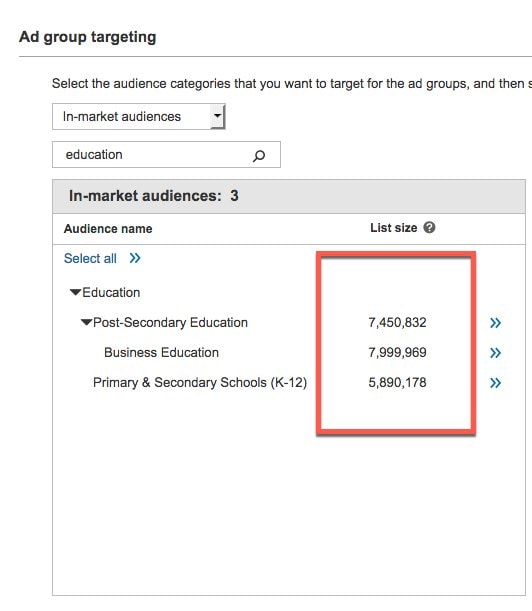It’s important to regularly revisit your paid search strategy to improve campaign performance. Take these 10 best practices into account.
Reviewing best practices for pay-per-click is a great way to keep up with trends and improve performance. Especially now, as the advertising world is dealing with more change than ever.
As your business strategies and goals have evolved over the past 18 months, revisiting your paid media plan is an opportunity to ensure your strategy aligns with PPC best practices.
As you review, you’ll find new strategies and features to incorporate into your paid search program, too.
Here are 10 PPC best practices to help you adjust and plan for the months ahead.
1. Budget Review & Optimization
Some advertisers get stuck in a rut and forget to review and reevaluate the distribution of their paid media budgets.
To best utilize budgets, consider the following:
- Reconcile your planned vs. spend for each account or campaign, on a regular basis. Depending on the budget size, monthly, quarterly, or semiannually will work as long as you can hit budget numbers.
- Should poor performance campaigns, that have been optimized throughout the year, be eliminated at this time to free up the budget for other campaigns?
- Is there additional traffic available to capture to grow results for the winning campaigns? Competitive metrics data can help and include search impression share and click share.
- If other paid media channels have mediocre performance, does it make sense to shift those budgets to another?
- For the overall paid search and paid social budget, can your company invest more in the positive campaign results?
2. Review New Features in Google Ads & Microsoft Ads
This year brings great new features in the search ads platforms, so we can focus on more important things like optimizing audiences and adding new ad extensions.
Don’t overlook these new features; some are in beta, but soon to come:
- Video Extensions: Microsoft Ads released video extensions, which appear next to an ad as a thumbnail and expand into a full video when clicked.
- Multimedia Ads: A new responsive ad format in Microsoft Ads, it combines advertisers’ creative ad assets like images, headlines, and descriptions using machine learning to create engaging, attention-grabbing ads.
While you are exploring new features, check out some hidden PPC features you probably don’t know about.
3. Test New Platforms
Testing new paid channels is one of the most important best practices you need to know.
Go beyond your comfort zones in Google, Microsoft, and Facebook.
Here are a few other advertising platforms to consider testing:
- LinkedIn: Most appropriate for professional and business targeting. LinkedIn audiences can also be reached through Microsoft Ads.
- Pinterest: Products, services, consumer goods with a female-focused target.
- Snapchat: Younger demographic (13 to 35), video ads, app installs, filters, lenses.
Need more detailed information and even more ideas? Read more about The 8 Best PPC Ad Networks and 5 Best Google Ads Alternatives.
4. Revisit Keyword Match Types
Recently Google made changes to keyword match types including discontinuing broad match modifier (BMM) and expanding the reach of the phrase match.
These changes may lead to a reduction of traffic in current BMM keywords, and an increase in current phrase match keywords.
Now, new BMM keywords cannot be added to your account. While it is not necessary to convert BMM to phrase match, now is a perfect time to revisit your campaign match types considering the changes and past performance.
Critical to your strategy:
- Review the technical keyword changes and determine if this may impact your account in terms of close variants or shifts in traffic volume.
- Brush up on everything you need to know on Google phrase match, as it has evolved and shifted over the years.
- Review search term reports more frequently for irrelevant keywords that may pop up from match type changes. Incorporate these into match type changes or negative keywords lists as appropriate.
5. Test Additional Features
If you haven’t yet, another feature to consider with a big impact is the Audience Network in Microsoft Ads. It is AI-powered and can add a punch to your current search campaigns.
The secret is its analysis of billions of audience intent signals from Microsoft properties (including billions of Bing searches, MSN, Outlook, Skype, and LinkedIn). This results in highly relevant in-market lists that can reach searchers just at the time they are looking to make a purchase.
When browsing over 200+ in-market categories, you also get to see a list size of the users, which is extremely helpful for planning.
6. Audiences Integrated with Search
Be sure to review the audiences you selected last year, especially if you have been testing the audiences in #5.
First, many more audiences have been added by both Google and Microsoft.
Some additional “features” found in the settings that automatically expand your audience could be helpful, but keep an eye out for any degrading performance over time in:
- Google: optimized targeting.
- Microsoft: audience network.
Remember, an audience is simply a list of users who are grouped together by interests or behavior online.
Therefore, there are unlimited ways to mix and match those audiences and target per the sales funnel.
Here are few opportunities to explore and test:
- LinkedIn targeting: Exclusively in Microsoft Ads.
- Detailed Demographics: Marital status, parental status, home-ownership, education, household income.
- In-market and custom intent: Searches and online behavior signaling buying cues.
- Remarketing: Advertisers website visitors and video/ YouTube.
Note: This varies per the campaign type and seems to be updated frequently, so make this a regular check-point in your campaign management for all platforms.
7. Learn to Use Scripts
PPC managers can learn to automate repetitive tasks in their Google Ads accounts using scripts added to the account.
Navigating through the world of scripts can seem overwhelming, but a good place to start is a post here on Search Engine Journal providing use cases and resources to get started with scripts.
Luckily, you don’t need a Ph.D. in computer science — there are plenty of resources online with free or templated scripts.
Google also holds workshops across the country for training.
8. Voice Search Preparation
You may not be getting a large number of voice searches yet. Most advertisers aren’t.
It seems like voice search popularity hasn’t been moving fast and furious, but it is still important to keep abreast of the trends.
Be ready to respond to information voice searchers are seeking or negative-out the irrelevant searches.
Read up on the basics in 4 Steps to Prepare Your PPC Campaigns for Voice Search, including how to identify voice search queries.
Review this activity on a regular basis to determine if there are any valuable keywords to add to the account or as a new campaign.
For example, if you notice several navigational voice searches like “sushi restaurant near me”, consider creating a campaign to hyper-target those people trying to find you.
You might try ads and landing pages with easy access to reservations, directions, hours, and parking, for example.
9. Reevaluate How You Report
Have you been using the same performance report for years?
It’s time to reevaluate your essential PPC key metrics and replace or add that data into your reports.
There are two great resources to kick off this exercise:
- The 6 Most Important PPC KPIs You Should Be Tracking
- How to Measure Success in PPC Campaigns With & Without Conversion Data
Both Microsoft Ads and Google Ads have “Overview” pages that provide a few handy graphs if you need them in a pinch.
Your objectives in reevaluating the reporting are:
- Are we still using this data?
- Is the information we are using actionable?
- What new metrics should we consider adding we haven’t thought about? How often do we need to see this data?
Adding new data has no point unless it is actionable and will be used to make decisions on the account. Don’t waste time adding more data simply for the sake of it.
10. Seek Collaboration
If the PPC wheels keep spinning but going nowhere, it’s time to step back to seek out friendly resources and second opinions.
Much of the skill and science of PPC management is unique to the individual or agency, so there is no shortage of ideas to share between you.
You can visit the Paid Search Association, a resource for paid ad managers worldwide, to make new connections and find industry events.
Also, check out ebooks, experts on Twitter, and industry publications for resources and tips for motivation.
___
by Lisa Raehsler
source: SEJ



